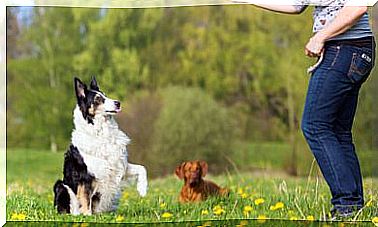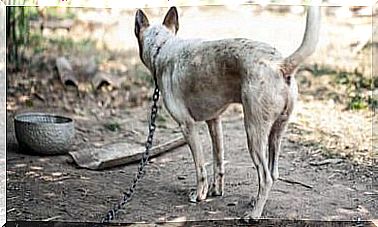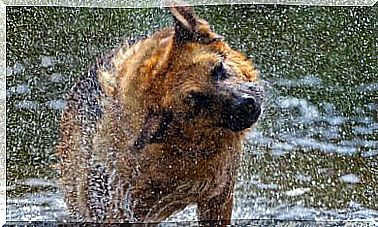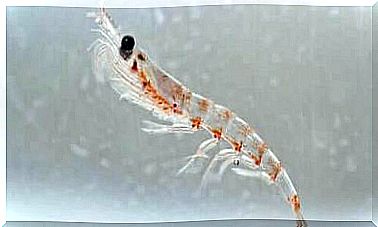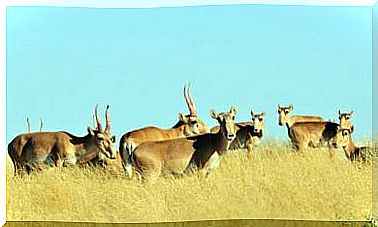How Is The Caterpillar Of The Pine Processionary Moth?
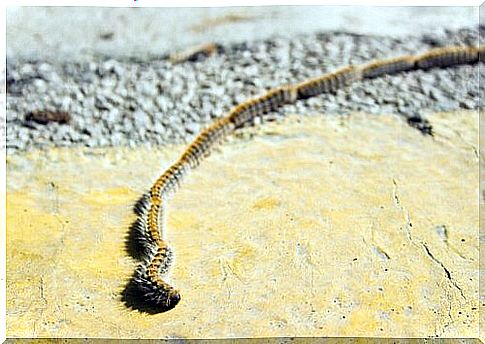
When spring begins and temperatures rise, all of a sudden many types of insects and crawfish appear. This also includes the classic caterpillar of the pine processionary moth. This strange creature suddenly appears in fields, parks and gardens.
They can be easily recognized by the fact that they form strange lines that seem strange to us. Nevertheless, the caterpillar of the pine processionary moth is dangerous for our pets and also has an impact on the environment.
Below we have some information for you about this unique animal and we also mention the dangers it poses.
Some data on the pine processionary moth caterpillar
The pine processionary moth is a type of butterfly that invades different parts of Europe every year. It is mainly found in the forests of Central and Southern Europe and is referred to as a plague.
The caterpillars of these animals have a black head and skin, with gray tones on the sides. Your whole body is covered with reddish hairs that have a strong irritant effect.
Therefore, they are dangerous not only to humans but also to our pets. This is especially true for dogs.
The caterpillar of the pine processionary moth shows a social behavior that induces them to line up next to one another. From their nest in the trees, they come down to the ground, head to butt, just as if they were part of a procession. That’s where her name comes from.
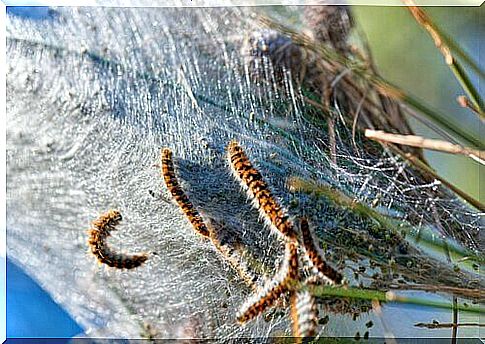
These caterpillars always move together, in a row. When the moment has come, they dig themselves into the earth in order to complete their development there.
A few months later they reappear as adult moths.
They are mainly found in the pine forests of the Mediterranean area, but they are also found in firs and cedars.
Why is the pine processionary moth caterpillar dangerous?
These animals are dangerous for our pets as they can cause allergies and nettle rashes. If they feel threatened, their poisonous hairs peel off and our four-legged friends then become their most frequent victims.
Each caterpillar has around 500,000 of these hairs, which are filled with a stinging toxin. The stinging hairs then act like needles and inject the poison into the skin or mucous membranes of our fur noses.
It is enough to get close to them, to sniff at them or to touch them to get a dose of them. This can lead to irritation of the eyes, nose or throat. Some animals also experience an allergic reaction, which can have more serious consequences.
Mechanical, chemical and biological controls are used to control these pests . Often their nests are burned between September and November.
Nowadays, pheromone traps are also used for the males. This is a very efficient method that does not even reproduce in the first place.
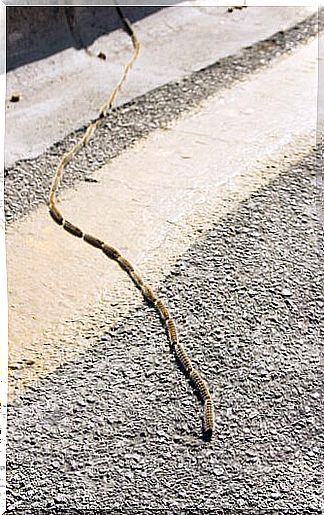
How do you know that a dog is affected?
It is very easy for a dog to come across these crawly animals while walking. Especially if it is a curious cub, there is a high probability that it will approach the caterpillars.
He could sniff them, lick them, eat them, or just touch them with his snout. That’s enough to provoke a reaction.
The signs of poisoning by the pine processionary caterpillar vary. The most common are intense itching or hives, swelling of the lips or tongue, and increased salivation.
The four-legged friend then usually becomes nervous and fidgety and tries to scratch its mouth with its front paws.
It is also possible that fever, vomiting and diarrhea occur if the fur nose has swallowed a caterpillar. For us caregivers, it is particularly important to pay attention to the state of the dog’s tongue.
This often catches fire and turns blue. If treatment is not provided immediately, necrosis and loss of the affected tissue can result.
Damage to the tongue can cause the dog to refuse to eat. The most severe cases result in edema of the face or throat, which can lead to breathing problems.
You also have to make sure that the fur nose does not suffer an anaphylactic shock, which can be fatal.
If a dog comes into contact with the caterpillar of the pine processionary moth, you have to seek out an expert as soon as possible. The best thing to do, however, is to prevent this by avoiding areas with lots of pine trees in February, March and April.


